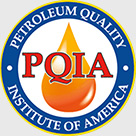 Environmental protection and sustainability have become important parts of any business. Changing attitudes and intensifying regulations have pushed “going green” from a consideration to a necessity. This trend has led to more and more people turning to re-refined oil.
Environmental protection and sustainability have become important parts of any business. Changing attitudes and intensifying regulations have pushed “going green” from a consideration to a necessity. This trend has led to more and more people turning to re-refined oil.
By hydrotreating used oil, worn out additives and contaminants are separated from base oil, allowing it to be used again. The base oil, usually 80 to 85 percent of the mixture, can then be used again and new additive packages can be included. The spent additives can be used or sold, as they have applications in construction, paving, roofing and other industries.
Businesses of all sizes face growing social and government pressure to reduce their carbon footprint and adopt sustainable technology. Using re-refined oil could be a step in that direction, especially for large scale enterprises that cycle through a lot of lubricant.
Related Product: Eco-Ultra
“Big corporations, their carbon footprint is being tracked very closely. Using re-refined products is a great way to stay on top of that,” Mike Wyant, Director of Technical Services for PetroChoice, said. “It’s how you perceive that oil and what value you place upon it. It’s sustainable, it’s a better carbon footprint, there are less emissions, there are all these good things about the oil.”
In the past, industry insiders have thought of re-refined oil as an inferior product. That perception is beginning to change as new technology and more advanced hydrotreating techniques allow for better quality. Wyant said re-refined oils, provided they are treated correctly, can even outperform more traditional products.
“Some folks think it is inferior. That is a myth,” Wyant said. “The API (American Petroleum Institute) actually encourages re-refined oil. When they designate qualities of oil, the terms re-refined and ‘virgin’ are not even involved. Sulfur saturates and viscosity index are the building blocks of quality oil. As long as it is hydrotreated correctly, re-refined oil is going to perform as good, if not better, than a ‘virgin’ crude-based oil.”
Related: Learn more about PetroChoice’s green engine oil
Wyant said he is beginning to see re-refined oil become more prevalent as its benefits become more apparent. Re-refined oils can cause as much as 81 percent fewer greenhouse gas emissions. The re-refining process also uses 85 percent less energy than refining from new crude oil.
“We have seen it take off. I think it is how you get it out into the world and relay the story behind it. It does make a difference, we know that it makes a difference. It takes less energy to refine, it has less emissions, it requires less crude. We know there is a benefit.”








